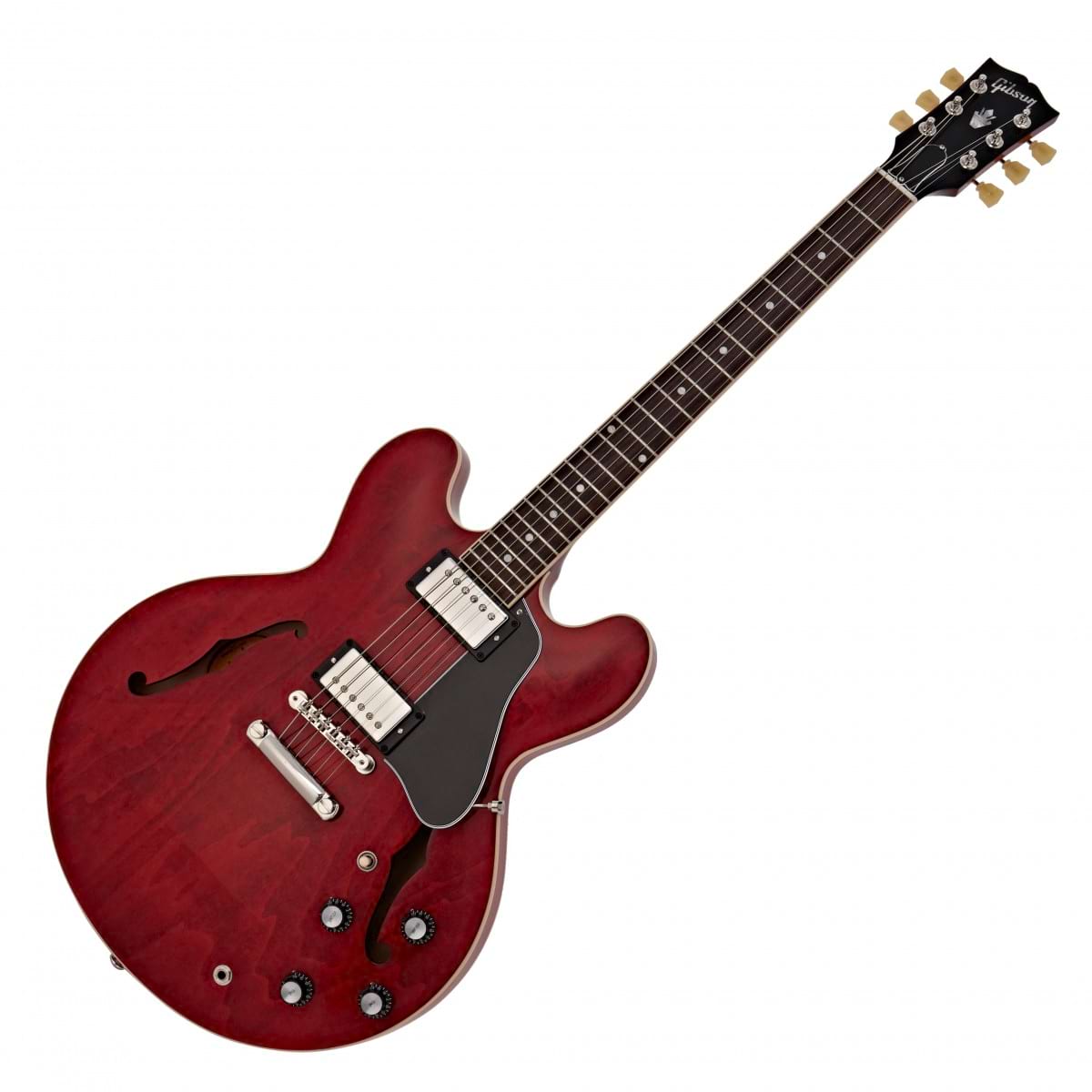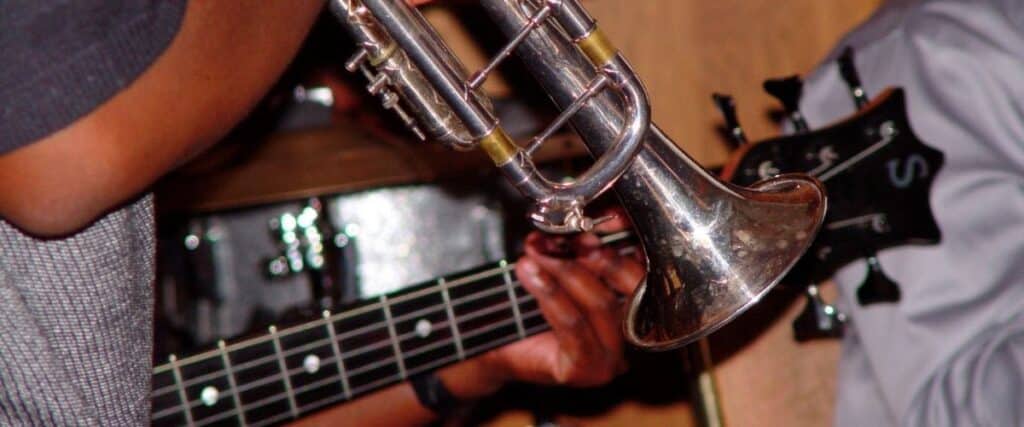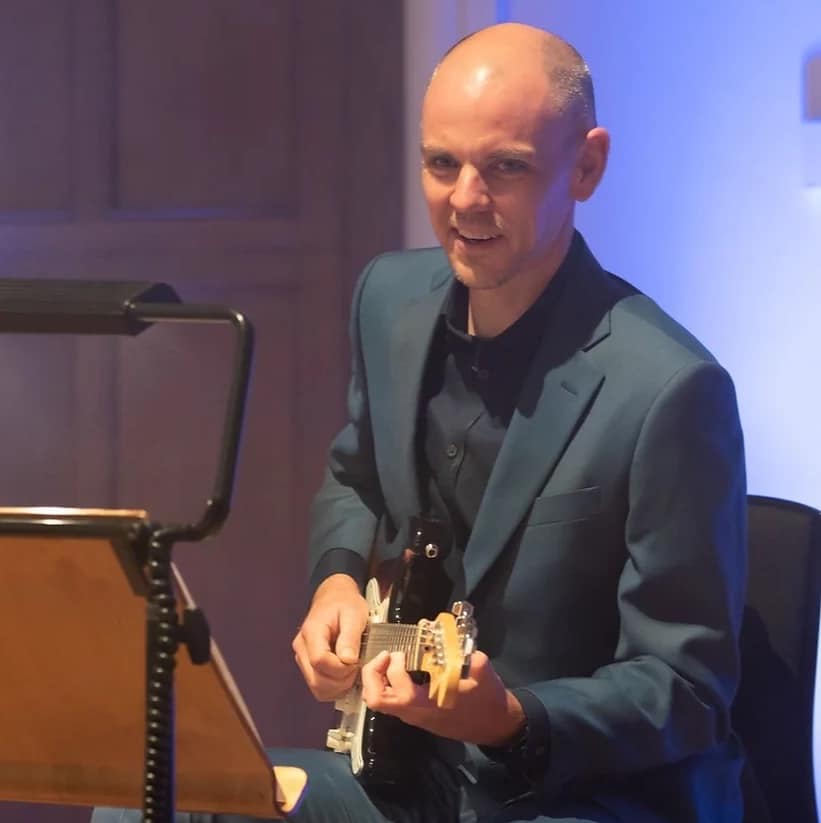Did you know that the electric guitar didn’t just rock the world; it practically gave modern jazz a megaphone and a funky pair of sunglasses?

Buckle up because we’re going to reveal how this rebellious stringed wonder transformed jazz from smoky lounges to electrifying stages, proving that sometimes, all you need is a little amplification and a lot of attitude to make history!
The Jazz Guitar's Journey to Recognition
In its early days, the jazz guitar faced an uphill battle for recognition, often struggling to find its voice amid the cacophony of louder instruments.
In the vibrant streets of New Orleans, guitarists played a crucial role in the jazz ensemble, yet they frequently found themselves overshadowed by the bold sounds of trumpets and clarinets.
As a result, the guitar’s subtler tones were often drowned out, leaving many to question its significance in the jazz genre.

It wasn’t until later that musicians began to explore the guitar’s unique capabilities, gradually carving out a distinct and celebrated role for it in the evolving landscape of jazz music. This journey from the shadows to the spotlight showcases the guitar’s resilience and its eventual rise as a vital voice in the jazz world.
Nick Lucas and Eddie Lang's Fight for the Guitar in Jazz
Nick Lucas and Eddie Lang were pivotal figures in the early jazz scene.
They championed the guitar’s rightful place in a genre dominated by the louder banjo. Their efforts were crucial in demonstrating that the acoustic guitar could deliver intricate melodies and harmonies despite its initial struggle to be heard above the din of brass instruments.


At the time, acoustic guitars were often considered too quiet to serve as prominent solo instruments, leading many to overlook their potential.
However, Lucas and Lang’s innovative playing styles showcased the guitar’s unique voice, gradually shifting perceptions and paving the way for future guitarists in jazz. Their determination not only helped elevate the guitar’s status but also transformed the soundscape of jazz music itself.
The Guitar Virtuoso Who Redefined Jazz
Django Reinhardt emerged as a top guitar soloist in the 1930s, captivating audiences with his extraordinary talent and innovative approach to jazz.

His unique style, characterized by rapid-fire fingerpicking and a blend of gypsy melodies with jazz improvisation, set a new standard for guitarists. Reinhardt’s ability to convey deep emotion through his playing not only earned him acclaim but also inspired countless musicians to explore the guitar’s expressive potential.
The Electric Guitar Pioneer Who Transformed Jazz
The introduction of the electric guitar in 1938 revolutionized the music scene, enabling guitarists like Charlie Christian to compete with the volume and artistry of horn players.

With its amplified sound, the electric guitar allowed Christian to showcase his innovative techniques and expressive playing, making a significant impact on the jazz genre. His groundbreaking work not only elevated the guitar’s status but also laid the groundwork for future styles, particularly bebop and beyond.
Christian’s unique blend of melodic lines and rhythmic complexity influenced countless musicians and helped define the guitar’s role in jazz.
Expanding the
Jazz Guitar Legacy
In the 1960s, guitarists like Wes Montgomery and Grant Green took Charlie Christian’s innovations and expanded jazz guitar’s horizons even further. Montgomery’s signature thumb-picking technique and rich, warm tones introduced a new level of sophistication and expressiveness to jazz guitar.


Meanwhile, Grant Green’s fluid playing style and rhythmic sensibility helped bridge the gap between jazz and soul, creating a sound that resonated with a broader audience. Together, these pioneering musicians built on Christian’s foundational work, pushing the boundaries of jazz guitar and inspiring future generations of players.
The Innovative Sounds of Pat Metheny and John Scofield
Modern jazz guitarists like Pat Metheny and John Scofield are at the forefront of pushing the boundaries of the genre, each developing a distinct and innovative.


Metheny’s ability to blend jazz with elements of rock, folk, and world music has resulted in a rich, eclectic sound that captivates audiences. Meanwhile, Scofield’s unique approach combines bluesy phrasing with complex harmonies, showcasing his versatility and deep understanding of jazz.
Both musicians draw from the rich history of jazz guitar while infusing their work with contemporary influences, ensuring the genre’s continued evolution. Their contributions not only honor the legacy of their predecessors but also inspire a new generation of guitarists to explore jazz music’s limitless possibilities.
THE TOP ELECTRIC GUITAR FOR JAZZ PLAYING
Squier Classic Vibe '60s Jazzmaster LRL, 3-Tone Sunburst

FEATURES: Fender-designed alnico single-coil pickups
OTHER INFO: Vintage-style tremolo and floating bridge for expressive playability
- Authentic retro aesthetics with a 3-tone sunburst finish
- Excellent tone versatility for surf rock, indie, and jazz
- Smooth and comfortable "C"-shaped neck profile
- Slightly heavier than other models in its range
When you click ‘Check Price’, you’ll see there are loads of great places to buy this item. Our personal favorite is Sweetwater for the US, and Thomann and Gear4Music for the UK & Europe.
They are the largest music retailers, with excellent customer service, competitive prices, really fast shipping, and the longest guarantees.
The professional musician who wrote this article combined many things,
from the product build, manufacturer’s reputation through to feedback
from other users, to create our famous TedScore™.
Epiphone Broadway, Wine Red

FEATURES: Archtop hollow body with vintage aesthetic
OTHER INFO: Equipped with Alnico Classic humbuckers for smooth, full tones
- Stunning wine red finish with elegant gold hardware
- Warm, resonant sound ideal for jazz and blues
- Comfortable neck for effortless chord transitions
- Limited versatility for heavier music genres
- Larger body size may not suit smaller players
When you click ‘Check Price’, you’ll see there are loads of great places to buy this item. Our personal favorite is Sweetwater for the US, and Thomann and Gear4Music for the UK & Europe.
They are the largest music retailers, with excellent customer service, competitive prices, really fast shipping, and the longest guarantees.
The professional musician who wrote this article combined many things,
from the product build, manufacturer’s reputation through to feedback
from other users, to create our famous TedScore™.
Gibson ES-335 Satin, Satin Cherry

FEATURES: Semi-hollow design with dual humbuckers for dynamic sound
OTHER INFO: Iconic guitar for rock, blues, and jazz enthusiasts
- Smooth satin finish enhances comfort and playability
- Versatile tone suitable for clean and overdriven settings
- Satin finish may show wear over time
When you click ‘Check Price’, you’ll see there are loads of great places to buy this item. Our personal favorite is Sweetwater for the US, and Thomann and Gear4Music for the UK & Europe.
They are the largest music retailers, with excellent customer service, competitive prices, really fast shipping, and the longest guarantees.
The professional musician who wrote this article combined many things,
from the product build, manufacturer’s reputation through to feedback
from other users, to create our famous TedScore™.
From Shadows to Spotlight:
The Enduring Legacy of the Jazz Guitar
The journey of the jazz guitar from obscurity to prominence is a testament to the resilience and creativity of its pioneers. From the early struggles of Nick Lucas and Eddie Lang to the groundbreaking innovations of Django Reinhardt and Charlie Christian, each guitarist has played a crucial role in shaping the soundscape of jazz.

The introduction of the electric guitar marked a turning point, allowing artists like Wes Montgomery and Grant Green to further expand their horizons, blend genres, and capture audiences.
Today, modern guitarists like Pat Metheny and John Scofield continue to push boundaries, ensuring that the guitar remains a vital and evolving voice in jazz. The jazz guitar will keep strumming its way into the hearts of music lovers for generations to come.










